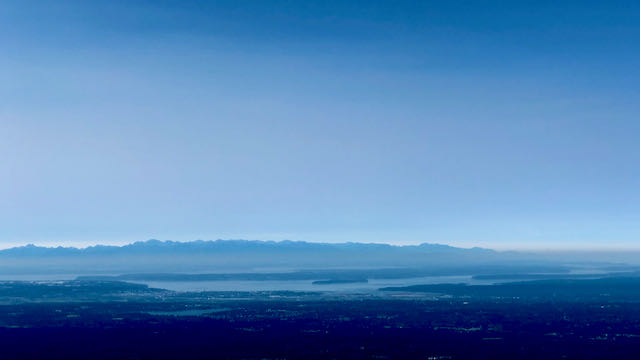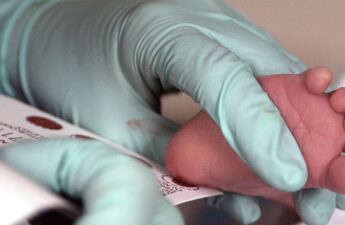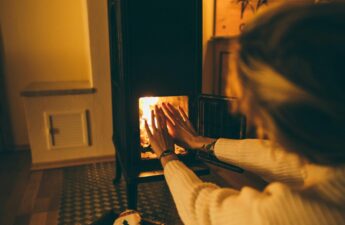Public Health Insider, Public Health – Seattle & King County

Written by King County Environmental Health Services
Last September, in the thick of the COVID-19 pandemic, we lived through an unprecedented wildfire smoke event throughout the Pacific Northwest that shattered air pollution records. For five consecutive days, King County residents experienced outdoor air quality that ranged from unhealthy to very unhealthy.
The poor air quality was caused by a “super massive” plume of smoke from multiple wildfires in Oregon that burned more than a million acres and destroyed more than 4,000 homes. Fires near the King/Pierce County border also contributed to the poor air quality locally.
Wildfire activity and weather patterns vary from year to year, making it a challenge to predict the likelihood of experiencing wildfire smoke events in any given year. However, for three of the past four years, wildfire smoke in our region has exposed people to unhealthy levels of particulate air pollution for prolonged periods of time. That is why Public Health is encouraging all residents to prepare now and be Smoke Ready.
What is the health threat from wildfire smoke?
Wildfire smoke is unhealthy for everyone, but children, pregnant women, stroke survivors, and people who are over 65 years of age or who have a respiratory disease or illness, heart disease or diabetes are especially vulnerable to smoke. It contains small particles and other chemicals that can irritate your eyes, nose, throat and lungs. It can cause your eyes to burn and your nose to run. Smoke can cause wheezing, coughing, shortness of breath and headaches. It can also worsen any existing lung, heart, or circulatory condition people may have, such as triggering asthma attacks. For most people symptoms are relatively minor but the impacts on the most vulnerable can be serious or even deadly. Research finds that people often experience the most severe outcomes from wildfire smoke the day after they were exposed.
One group that suffered more reported health impacts last year was, perhaps surprisingly, young, healthy people between 20 to 30-years old, many of whom continued to be active outdoors during smoke days. Please remember smoke is unhealthy for all.
Wildfire Smoke Increases Health Risks for People with COVID-19, Including those who have Recovered
Wildfire smoke may increase the severity of symptoms for people with COVID-19. COVID-19 can make it much harder to breathe. Poor air quality caused by wildfire smoke may make it even harder for people to fight COVID-19 since both have the potential to affect the lungs, and other overlapping parts of the immune system. Many people most susceptible to COVID-19 are also those most vulnerable to the impacts of wildfire smoke.
Individuals who have recovered from COVID-19 may be more vulnerable to wildfire smoke due to potential long-term damage from COVIDin the lungs. With more than 100,000 people in King County having recovered from COVID-19 illness, it is more important than ever to take steps to be Smoke Ready, especially if you or a family member has recovered from COVID-19.
How to Be Prepared for Wildfire Smoke this Year
Prepare your home –
If the air quality is poor, stay indoors to the extent possible. Creating a clean air space inside your home is your best option to ensure you are able to get relief from wildfire smoke this season. Find out more information from the U.S. EPA here.
Filtering the air in your home will reduce risk from COVID-19 as well as from smoke. Filtered air will reduce smoke levels and the amount of virus circulating in the air indoors. However, filtering air indoors alone will not be enough to protect you from the spread of COVID-19, and best practices of vaccination, social distancing, hand washing, and other measures should still be followed. Keep reading from more information on mask use during wildfire smoke events.
- If you have an HVAC system, buy filters that have the highest designated filter rating that the manufacturer recommends. Use the “recirculation” mode during wildfire smoke events. This is the best way to improve indoor air quality though out your home rather than just a single room.
- Another option to improve your indoor air quality it to consider purchasing an indoor portable air cleaner that has a “clean air delivery rating” (CADR) that matches the size of the room where you intend to use it. Choose a portable air cleaner that does not create ozone by selecting a model that has been certified by the California Air Resources Board. An approved list of portable air cleaners can be found on their website. More information on indoor air filters is available on the EPA’s website.
- You can also create your own low-cost air filter using a box fan and air filter to improve air quality in a single room in your home. Information on how to make a Do-It-Yourself (DIY) portable air cleaner and important safety tips to follow can be found on Puget Sound Clean Air Agency’s website.
When it gets smoky, you should also consider steps to reduce indoor sources of air pollution by keeping windows and doors closed and avoiding activities like burning candles and smoking indoors. Try to avoid vacuuming, unless you use a vacuum with a HEPA filter.
What about masks?
In an effort to continue to prevent transmission of COVID-19, Public Health officials have directed people in King County to continue wearing face coverings over their noses and mouths in indoor public locations and outdoor settings where they can’t stay six feet apart, until 70% of the population is fully vaccinated. Cloth and surgical masks generally provide very little protection against wildfire smoke. N95 respirators can provide protection against wildfire smoke when well fitted and worn properly. However, if worn incorrectly they can provide a false since of security, increasing your susceptibility to wildfire smoke. Because these respirators can restrict air flow and make it harder to breathe, N95 masks can worsen some pre-existing health conditions. Speak with your healthcare provider before using an N95 or other respirator for any extended period of time. And remember, limiting your time outdoors during wildfire smoke events is the best way to reduce your exposure to wildfire smoke.
Know where you can go
As the county continues to reopen on the path to COVID-19 recovery, public locations with cleaner and cooler air may continue to have specific requirements such as occupancy limitations, or time limits for customers and guests as they continue to help prevent the spread of COVID-19. Public Health recommends reaching out to public locations that might be available in your area ahead of a wildfire smoke event to learn what COVID-19 precautions may still be in place before you go out. Getting vaccinated ahead of wildfire smoke season is the best way to stay healthy.
If you have an existing medical condition, talk with your healthcare provider
Anyone with an existing medical condition such as heart disease, diabetes, asthma or chronic obstructive-pulmonary disease (COPD) should talk with your healthcare provider about how to decrease your risk from wildfire smoke. Create a personal wildfire smoke plan and make sure you have any necessary medications or prescriptions on hand before wildfire smoke season starts. Consider stocking up on food and other necessary supplies too.
If you have older family members or friends, help them plan for wildfire smoke this season.
Stay informed about air quality conditions and wildfire smoke forecasts
- Air quality conditions may change quickly. Check the air quality forecast regularly at the Puget Sound Clean Air Agency’s website.
- You can find Puget Sound Clean Air Agency online at: www.pscleanair.gov/
- Washington Wildfire Smoke Blog: https://wasmoke.blogspot.com/
- Smoke from Fire tips – Washington Department of Health
- Smoke Ready Toolbox – U.S. Environmental Protection Agency
Originally posted June 17, 2021


